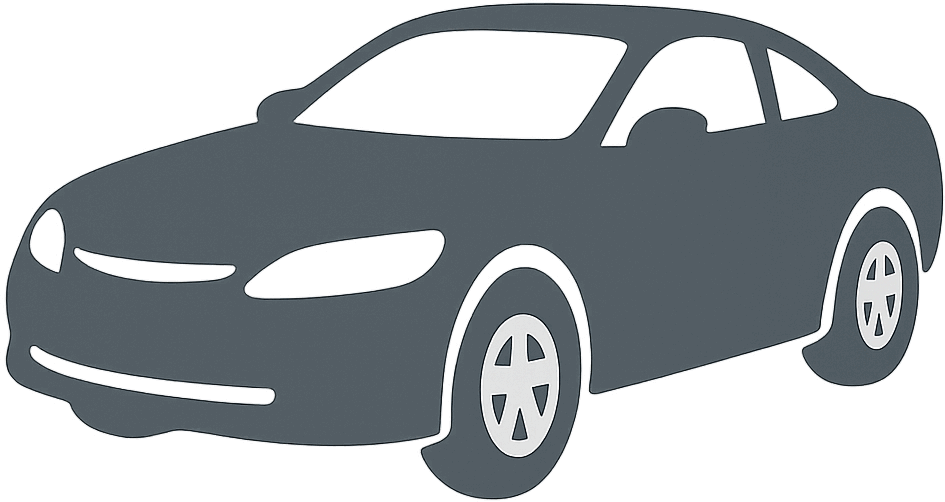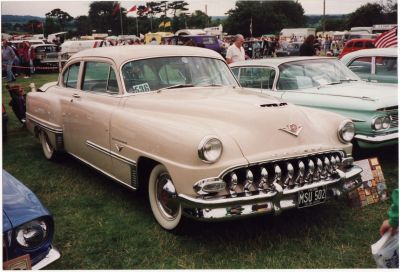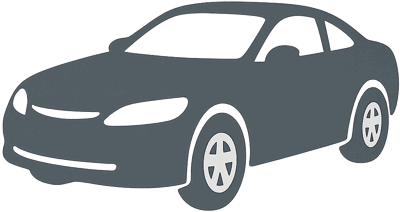 1953 DeSoto Firedome Sportsman Coupe (facelift 1953) Dimensions, Size & Specs
1953 DeSoto Firedome Sportsman Coupe (facelift 1953) Dimensions, Size & Specs
Measurements of the 1953 DeSoto Firedome Sportsman Coupe, engineered for optimal performance and comfort
| Dimensions | |
|---|---|
| Length: | 5420 mm213.4 in17.8 ft |
| Width: | 1963 mm77.3 in6.4 ft |
| Height: | 1588 mm62.5 in5.2 ft |
The 1953 DeSoto Firedome Sportsman Coupe represents a refined facelift model produced during 1952 and 1953. As a classic American coupe, the Firedome Sportsman embodies the distinctive styling and solid build quality characteristic of early 1950s automotive design. With an overall length of 5420 mm (213.4 inches), it offers a significant road presence, contributing to both comfort and aesthetic appeal. The vehicle measures 1963 mm (77.3 inches) in width, providing ample cabin space and enhanced stability, while standing at a height of 1588 mm (62.5 inches), giving it a balanced and sleek silhouette ideal for a coupe design. This generation of the Firedome prioritized a blend of luxury and performance, making it a sought-after model for collectors and enthusiasts interested in classic American muscle and style. Its moderate height and wide stance underline the car's commitment to solid handling dynamics paired with a roomy interior. Today, the 1953 DeSoto Firedome Sportsman Coupe remains a testament to mid-century automotive innovation, appealing to those interested in vintage car dimensions and detailed size comparisons for classic coupes.
Discover the standout features that make the 1953 DeSoto Firedome Sportsman Coupe a leader in its class
Have a question? Please check our knowledgebase first.
The 1953 DeSoto Firedome Sportsman Coupe, facelift version, measures approximately 5420 mm (213.4 inches) in length, 1963 mm (77.3 inches) in width, and 1588 mm (62.5 inches) in height. These dimensions give it a spacious and commanding presence typical of mid-20th century American coupes, balancing style with comfortable interior space. The width contributes to stability on the road, while the moderate height complements its aerodynamic design. These size attributes make the Firedome Sportsman Coupe stand out in its class during the early 1950s.
At 1963 mm (77.3 inches) wide, the 1953 DeSoto Firedome Sportsman Coupe is relatively broad for its era, which provides enhanced road presence and improved stability during driving. The wide stance helps reduce body roll and contributes to better cornering capabilities on highways and city streets alike. However, this wider width may pose slight challenges when maneuvering through narrow urban streets or tight parking spaces. Despite this, the coupe's design was optimized for comfortable cruising rather than compact maneuverability, reflecting the style and priorities of the 1950s American automobile market.
The height of the 1953 DeSoto Firedome Sportsman Coupe is about 1588 mm (62.5 inches). This moderate height ensures a lower center of gravity which is beneficial for handling and stability on the road. At the same time, it allows for a comfortable headroom inside the coupe, balancing driver and passenger comfort with classic styling cues prevalent in that era. The height complements the coupe’s aerodynamic silhouette, which was important to maximize fuel efficiency and reduce wind noise during the 1950s. It also contributes to the vehicle's sleek and stylish profile.
Standard garage sizes typically range around 2400 mm (94.5 inches) in width and approximately 4800 mm (189 inches) in length. Given the Firedome Sportsman Coupe's dimensions of 5420 mm (213.4 inches) length and 1963 mm (77.3 inches) width, this car is longer and wider than a typical single-car garage can comfortably accommodate. Owners might need a larger or custom-sized garage to store this coupe without difficulty. The width approaches the upper limits of typical garage widths, while the length exceeds standard depths, reflecting the car's status as a full-sized vehicle designed for spaciousness over compact convenience.
Compared to the earlier 1952 model, the 1953 facelift of the DeSoto Firedome Sportsman Coupe retained very similar dimensions, as the changes were more stylistic than structural. The length, width, and height remained close to the same measurements to maintain interior space and overall performance characteristics. However, the 1953 facelift introduced design updates such as revised grille and trim details that enhanced its aesthetic appeal without significantly affecting the car's footprint. Thus, while dimensionally consistent, the facelift update provided a fresher look while preserving the spacious coupé body style.
The 1953 DeSoto Firedome Sportsman Coupe's size is quite representative of American full-sized coupes of the era. With its length of 5420 mm (213.4 inches) and width of 1963 mm (77.3 inches), it is comparable to contemporaries such as the Chrysler Windsor and Buick Roadmaster coupes, which also emphasized spaciousness and road presence. These cars were generally larger than European models, reflecting U.S. consumer preferences for roomy interiors and expansive designs. The Firedome Sportsman coupe fits well within this segment, balancing luxury, comfort, and style on a sizeable platform typical of early 1950s American automobiles.
The 1953 DeSoto Firedome Sportsman coupe features a classic two-door coupe body style, characterized by its sleek roofline and sportier profile compared to sedans. This body style slightly reduces the overall height and weight compared to four-door models but maintains a substantial length and width to provide ample passenger space. The coupe design emphasizes style and performance, often appealing to buyers seeking a more dynamic look while still enjoying full-sized car comfort. The coupe form paired with its dimensions creates a balance of presence and agility common in mid-century American personal luxury vehicles.
Although exact curb weight figures for the 1953 DeSoto Firedome Sportsman Coupe can vary, models from this era and classification typically weigh between 1700 to 2000 kg (approximately 3750 to 4400 lbs). This substantial weight results from robust construction methods, steel body panels, and luxury appointments. The weight contributes to stable and smooth highway cruising, a hallmark of American road cars in the early 1950s. However, the added mass can also affect acceleration and fuel efficiency slightly when compared to smaller or lighter vehicles, reflecting a design preference for comfort and durability over sporty performance.
The large exterior dimensions of the 1953 DeSoto Firedome Sportsman Coupe translate to a spacious interior, offering generous legroom and headroom for front and rear passengers. Its substantial length of 5420 mm (213.4 inches) enables a roomy cabin with wide seating arrangements typical of luxury coupes from the 1950s. Even with the sloping coupe roofline, designers optimized interior space to balance style and comfort. The width of 1963 mm (77.3 inches) ensures comfortable shoulder room, adding to a pleasant driving and riding experience. The interior was designed to accommodate luxury features of the era, making the car suitable for longer journeys with four passengers.
The 1953 facelift of the DeSoto Firedome Sportsman Coupe brought stylistic updates primarily focused on the front fascia and interior detailing. These changes included a redesigned grille with a more prominent and modern appearance, updated bumper design, and refreshed trim accents that aligned with evolving 1950s automotive trends. While the mechanical aspects and overall size remained largely unchanged from the previous model year, the facelift successfully modernized the coupe’s look to maintain market appeal. This update helped maintain DeSoto’s competitive edge by blending classic full-size comfort with contemporary styling cues.
Discover similar sized cars.

| Production: | 1952-1953 |
|---|---|
| Model Year: | 1953 |
| Length: | 5420 mm213.4 in |
| Width: | 1963 mm77.3 in |
| Height: | 1588 mm62.5 in |

| Production: | 1952-1953 |
|---|---|
| Model Year: | 1953 |
| Length: | 5420 mm213.4 in |
| Width: | 1963 mm77.3 in |
| Height: | 1588 mm62.5 in |
